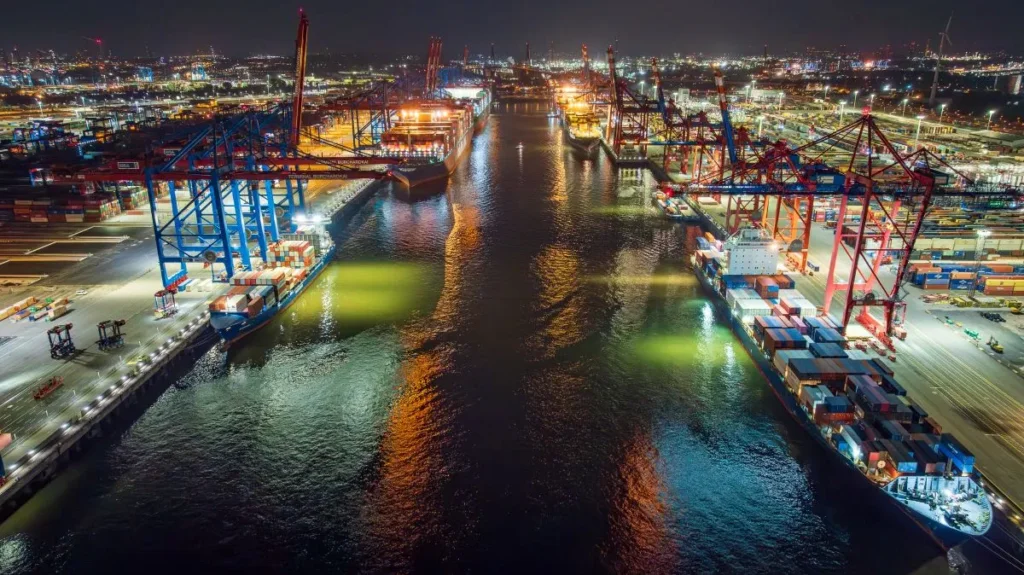The Baltic Hub container terminal, operating in the Port of Gdańsk, has summarised its results for 2024. Over the past 12 months, the largest container terminal in the Baltic Sea recorded record transshipments.
Last year was intense for Baltic Hub not only because of the large volumes of cargo handled but also due to the progress in construction works at the T3 terminal and other projects.
The terminal’s operating result for 2024 amounted to 2.242 million TEU (Twenty-foot Equivalent Unit—a unit of measurement in maritime transport and logistics, corresponding to the volume of one 20-foot container), surpassing 2023’s figures. In 2024, Baltic Hub serviced 642 ships, including 147 ocean-going vessels.
It is worth mentioning that in July, a record number of transshipments occurred with the arrival of one of the larger units, reaching 20.4 thousand TEU.
Last year, on June 5, the cornerstone for the construction of the third T3 terminal was also laid. The new quay and storage yards at the T3 terminal will strengthen the position of Baltic Hub, increasing transshipment capacity to 4.5 million TEU per year. The new terminal will be semi-automatic, meaning operators will be able to remotely control devices from ergonomically designed stations, ensuring a safe, efficient, and modern working environment year-round.
“The construction of the T3 terminal is an important stage in the development of Baltic Hub and an example of how Polish port infrastructure responds to the challenges of modern logistics. By investing in modern technologies and eco-friendly solutions, we are creating space for further development—both for our company and for the entire transport sector in Poland, as well as for our partners in the Czech Republic, Slovakia, and Hungary,” summarises Charles Baker, CEO of Baltic Hub.
The terminal has gained new cranes
In July last year, the terminal launched a fourth RMG crane on the railway siding, increasing the siding’s capacity to over 800,000 TEU per year. Baltic Hub states this is a response to the growing demand for rail connections with markets in Central and Eastern Europe.
The crane is equipped with an OCR system, anti-collision features, and cameras to assist operators. These innovative solutions have improved safety, efficiency, and precision.
A few months later, in October, four modern STS cranes arrived in Gdańsk. They will enter service in the first half of 2025. Each machine weighs 2,000 tons, stands 96 meters high (140 meters with the boom), and has a lifting capacity of up to 65 tons.
The T3 terminal under construction will be equipped with a total of seven such devices and 20 aRMG cranes. The next STS machines are already on their way to Gdańsk, with delivery expected at the end of February 2025.
Plans for 2025
Baltic Hub plans to complete the construction of the deep-water quay T3 and fully integrate it into transshipment operations this year. The investment in the new part of the terminal, along with its complementary projects, is a response to market demand. Thanks to the new 36-hectare container yard and 717 meters of deep-water quay, Baltic Hub will gain an additional 1.5 million TEU of transshipment capacity.









